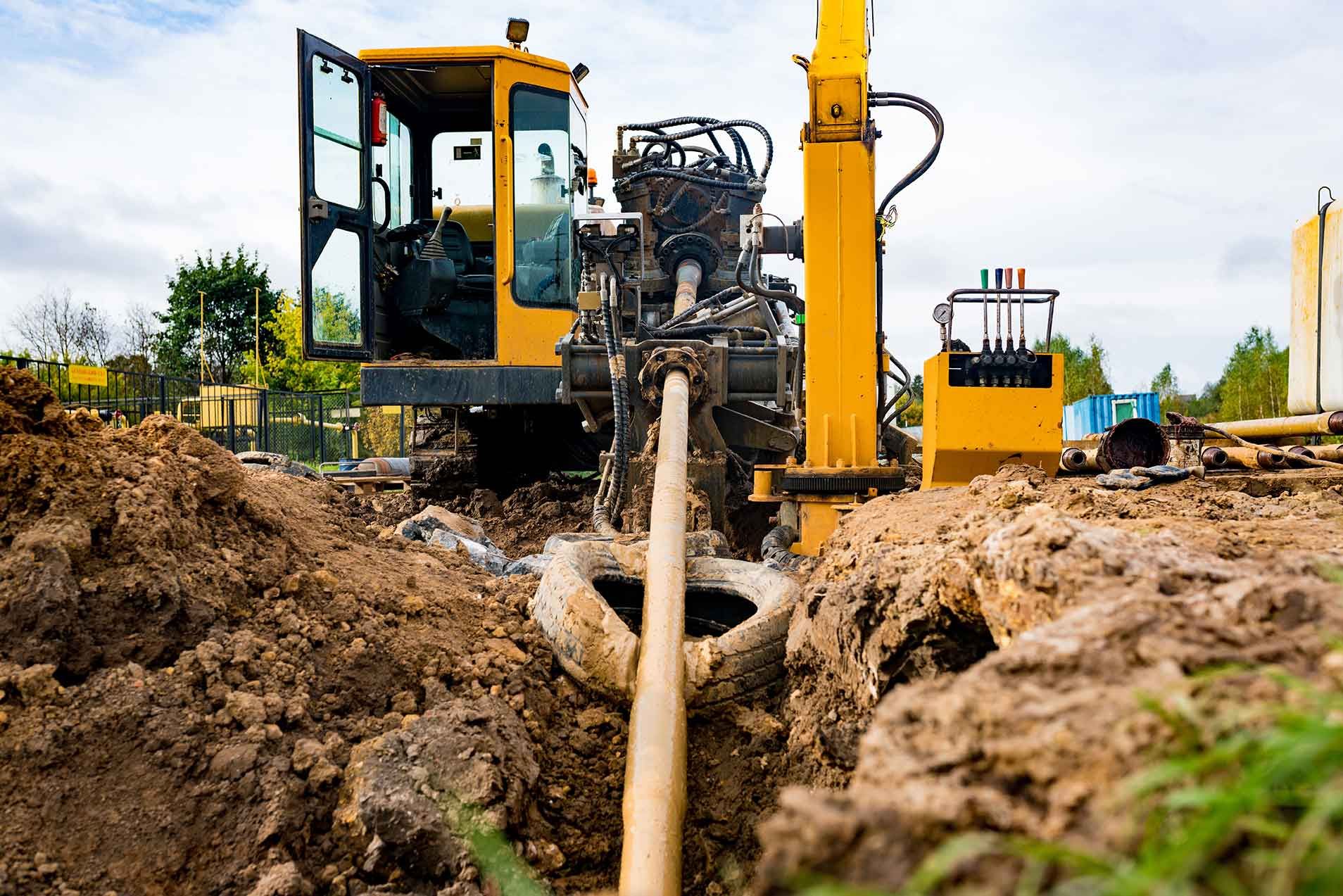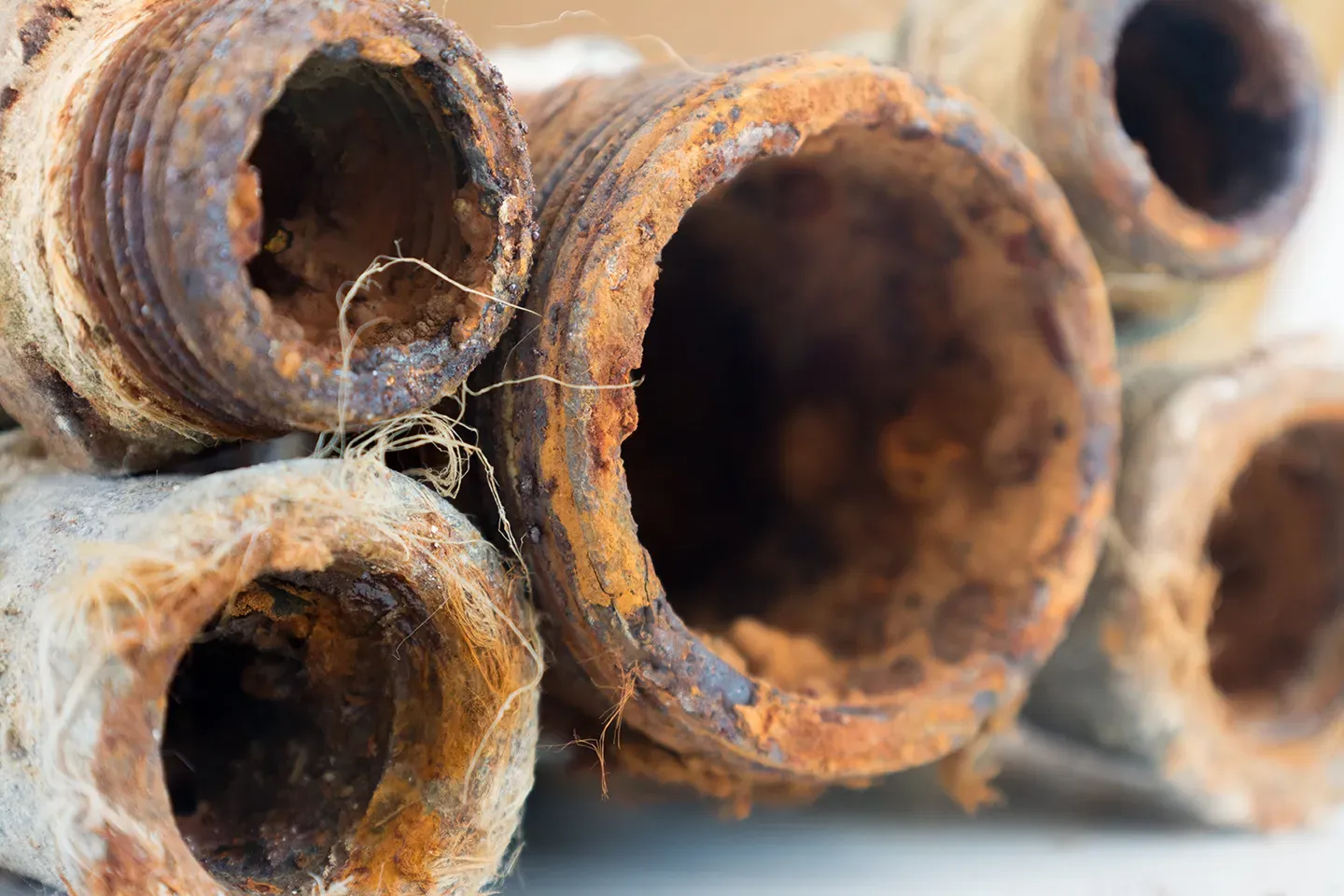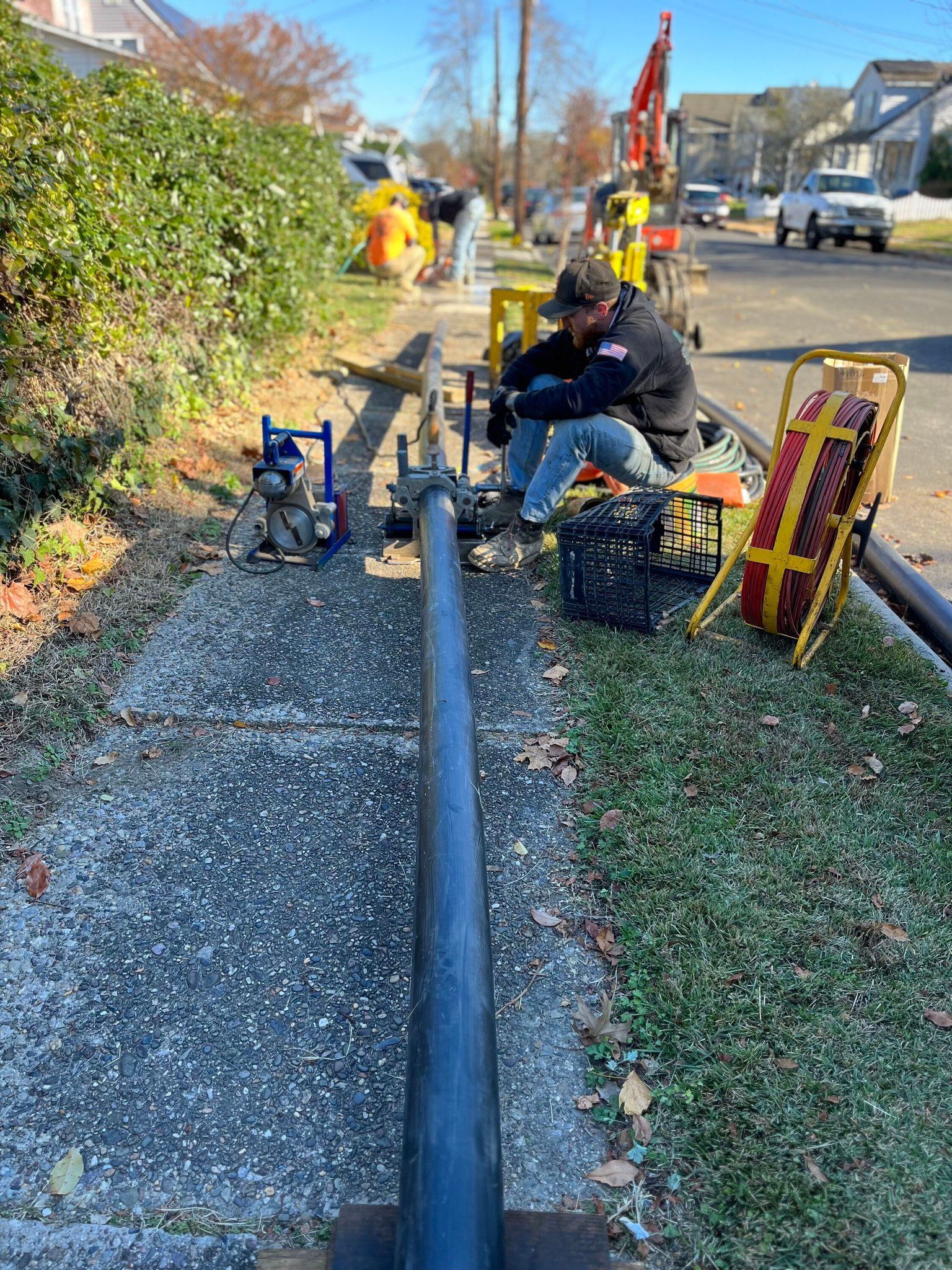Trenchless Sewer Replacement
According to the American Society of Civil Engineers’ 2021 Infrastructure Report Card, the water infrastructure alone faces an annual capital investment gap of $81 billion, which includes significant expenditures on pipe repairs and replacements (ASCE’s 2021 Infrastructure Report Card |). This statistic highlights the significant investment in maintaining and upgrading sewer infrastructure to meet public health and environmental standards. Trenchless Sewer Replacement is a powerful solution.
What is Trenchless Sewer Replacement?
Trenchless sewer replacement is a modern plumbing technology that allows us to replace old or damaged sewer lines without requiring extensive excavation. This method involves minimal digging, typically only requiring access holes at either end of the piping to be replaced, making it less invasive than traditional methods.
Why Choose Trenchless Technology for Sewer Line Replacement?
Choosing trenchless technology for sewer line replacement offers numerous benefits over traditional excavation methods. It is less disruptive, cost-effective, and quicker, minimizing the impact on your daily routine and property.
Get a quote
Trenchless Sewer Replacement Process
Here’s a simplified three-step method typically used in trenchless sewer replacement:
Site and Pipe Assessment
Initial Inspection:
A thorough inspection is conducted using a sewer video camera to assess the condition of the existing pipe and identify the exact location and extent of the damage. This step is crucial for the replacement process and for selecting the appropriate trenchless technology.
Access Point Creation:
Small access holes are created at strategic locations along the existing sewer line. These holes are used as entry and exit points for the trenchless equipment, reducing the need for large trenches across the property.
Pipe Bursting
Bursting Head Insertion:
A cone-shaped bursting head is inserted into the old sewer pipe through the access point. This head is larger in diameter than the pipe it replaces.
Pipe Fragmentation:
As the bursting head is pulled through the sewer line, it breaks the old pipe apart. This fragmented old pipe is pushed outward into the surrounding soil.
New Pipe Installation:
Simultaneously, a new sewer pipe, usually made of durable materials like HDPE (high-density polyethylene), is pulled into place behind the bursting head. This new sewer pipe replaces the old sewer line exactly where it lay.
Finishing and Quality Check
Connection and Sealing:
Once the new sewer pipe is in place, it is connected to the existing sewer system at the access points. Connections are checked and sealed to prevent leaks.
System Testing:
The new sewer line is tested for functionality and integrity to ensure it operates correctly without leaks and can handle the expected wastewater flow.
Site Restoration:
Any disruptions to the landscaping or surfaces caused by the access holes are restored to their original condition or better.
Benefits of Trenchless Sewer Replacement
1. Cost-Effectiveness
Trenchless sewer replacement is generally more cost effective than traditional methods. It requires less labor and fewer materials and significantly reduces the need for extensive property restoration after completion.
2. Speed of Service
Trenchless sewer replacement is a swift solution, often completed in a fraction of the time required for traditional excavation methods. This rapid turnaround time minimizes disruption to your daily operations, providing a sense of relief and a quicker return to normalcy.
3. Longevity and Durability
The materials and techniques used in trenchless sewer replacement are of the highest quality, providing a solution designed to last for decades. This durability ensures that you won’t have to worry about frequent repairs or replacements in the future.

We Offer Trenchless Sewer Repair.
While trenchless sewer replacement is an effective solution for severely damaged or outdated systems, not every situation requires such an extensive approach.
Trenchless sewer repair offers a practical and less invasive alternative for properties with moderately damaged sewer lines where the system’s overall integrity remains intact.
At Root 24, we specialize in replacement and repair techniques, allowing us to tailor our approach to the specific needs of your plumbing system. Our trenchless sewer repair services are designed to quickly and efficiently address issues without requiring complete replacement, ensuring minimal disruption to your property and daily life. This seamless transition from replacement to repair solutions underscores our commitment to providing our clients with the most efficient and cost-effective services.
How Does Our Trenchless Sewer Repair Services Work?
When delving deeper into the technological differences between trenchless sewer repair and replacement, it becomes essential to consider the specific methods, their suitability for different conditions, and the materials and equipment used in each process. Here’s a detailed expansion on these points:
Initial Inspection and Preparation
Sewer Camera Inspection:
Root 24 begins the CIPP lining process with a detailed sewer camera inspection. This advanced technology allows technicians to assess the interior condition of the sewer pipes and identify precise locations of damage, such as cracks, leaks, or root intrusions. This step is crucial for determining the feasibility of CIPP lining and planning the repair.
Pipe Cleaning and Preparation:
The existing pipe undergoes a comprehensive cleaning and preparation process prior to the installation of the lining.
Root 24 employs hydrojetting or mechanical cleaning methods to eliminate all debris, residues, and obstructions. This guarantees that the lining material will adhere effectively to the pipe’s interior, resulting in a flawless, leak-free installation.
CIPP Lining Installation
Liner Preparation:
A flexible tube made from a felt-like material is impregnated with a resin, typically epoxy or polyester, which is the key component in the CIPP process. This liner is then carefully inserted into the existing sewer pipe.
Root 24 ensures that the resin mixture used is formulated to match the specific conditions of the pipe system, such as diameter and length, as well as environmental factors like temperature and humidity, which can affect the curing process.
Inversion or Pull-in-Place:
Depending on the specific method, the resin-saturated liner is either inverted into the pipe using water or air pressure (inversion method) or pulled into place (pull-in-place method).
Root 24 selects the method based on the configuration and condition of the sewer line to ensure optimal outcomes.
Curing and Final Inspection
Curing the Resin:
Once the liner is correctly positioned, it is cured to form a rigid, smooth pipe within the old pipe.
Root 24 uses hot water, steam, or UV light to cure the resin, depending on the project’s specific requirements and the resin type.
This process typically takes a few hours, after which the new pipe is essentially a solid, seamless pipe resistant to leaks, cracks, and root intrusion.
Post-Curing Inspection:
This is the final step in the process. After the curing process, a meticulous camera inspection is conducted.
Its purpose is twofold: to ensure the liner has adhered properly and to detect any defects in the installation. This step is absolutely essential to confirm the integrity of the repair and the functionality of the sewer line.
Common Problems with Trenchless Sewer Repair
While trenchless sewer repair is a robust solution for many, it has challenges. Problems can arise if the original pipe is severely misaligned or has too damaged joints.
In some cases, the existing damage may be underestimated, leading to incomplete sealing and continued leakage. Our team at Root 24 is skilled in evaluating these factors to ensure the best possible outcome for your sewer repair needs.
At Root 24, we are committed to providing high-quality, reliable sewer repair and replacement services that meet your needs and exceed your expectations. Contact us today to learn more about our trenchless sewer services or to schedule a consultation.

Regulatory and Compliance Issues in Trenchless Sewer Services
When Root 24 undertakes a trenchless sewer repair or replacement project, compliance with local, state, and sometimes federal regulations is paramount. Here’s a deeper look at how they handle regulatory and compliance issues:
Permits and Regulations
Before any trenchless work commences, Root 24 leaves no stone unturned to ensure all necessary permits are obtained.
The requirements for these permits can vary significantly depending on the locality, the scope of the project, and the environmental impact. Our meticulous approach to this process underscores our unwavering commitment to regulatory compliance.
Root 24 has a dedicated team that understands the specific regulatory landscape, which helps navigate the complexities of permit applications. We stay updated on any changes to regulations that might affect our work, ensuring that all projects comply with the latest standards.
Compliance with Local Codes
Each municipality has building and environmental codes that dictate how sewer lines must be installed, repaired, or replaced. These codes are designed to ensure safety, efficiency, and minimal environmental impact.
At root 24, our technicians are not just familiar with local codes for each area we service, they are well-versed in them. We ensure that every aspect of our trenchless work, from the equipment and materials used to the techniques employed, strictly adheres to these local stipulations. This unwavering compliance not only ensures legal adherence but also guarantees the structural integrity and longevity of the sewer systems we install or repair, providing you with peace of mind.

Regulatory and Compliance Issues in Trenchless Sewer Services
Contact us today to schedule a free consultation. Our experts will assess your needs and provide a detailed estimate, ensuring transparency and affordability.


